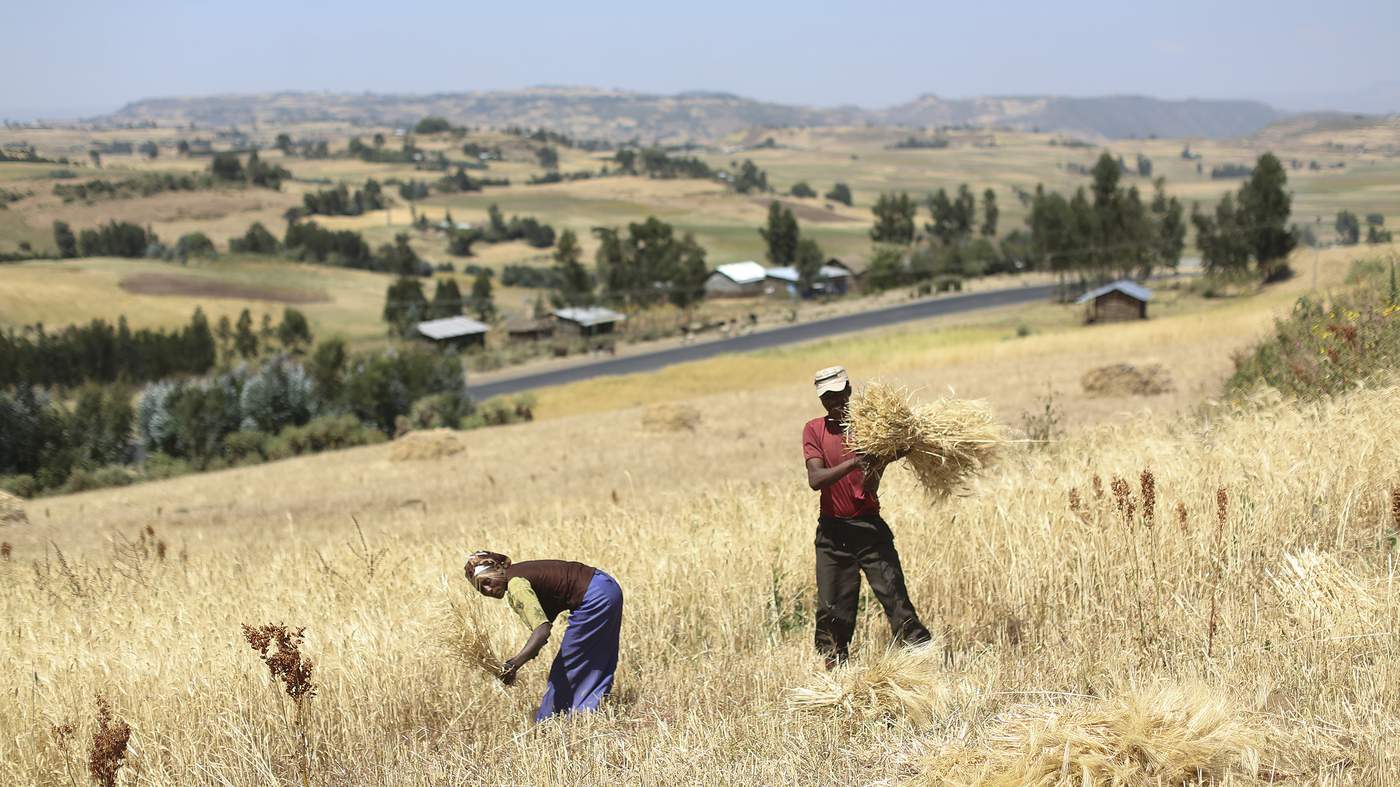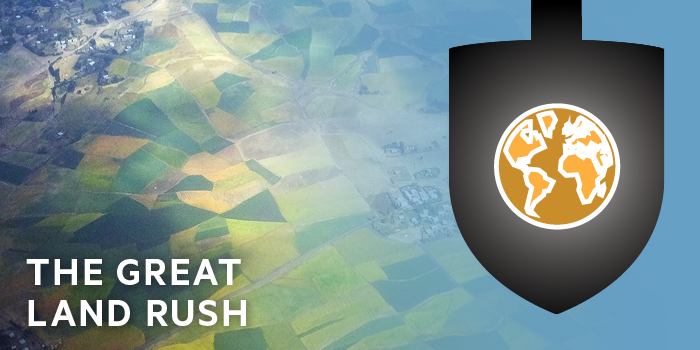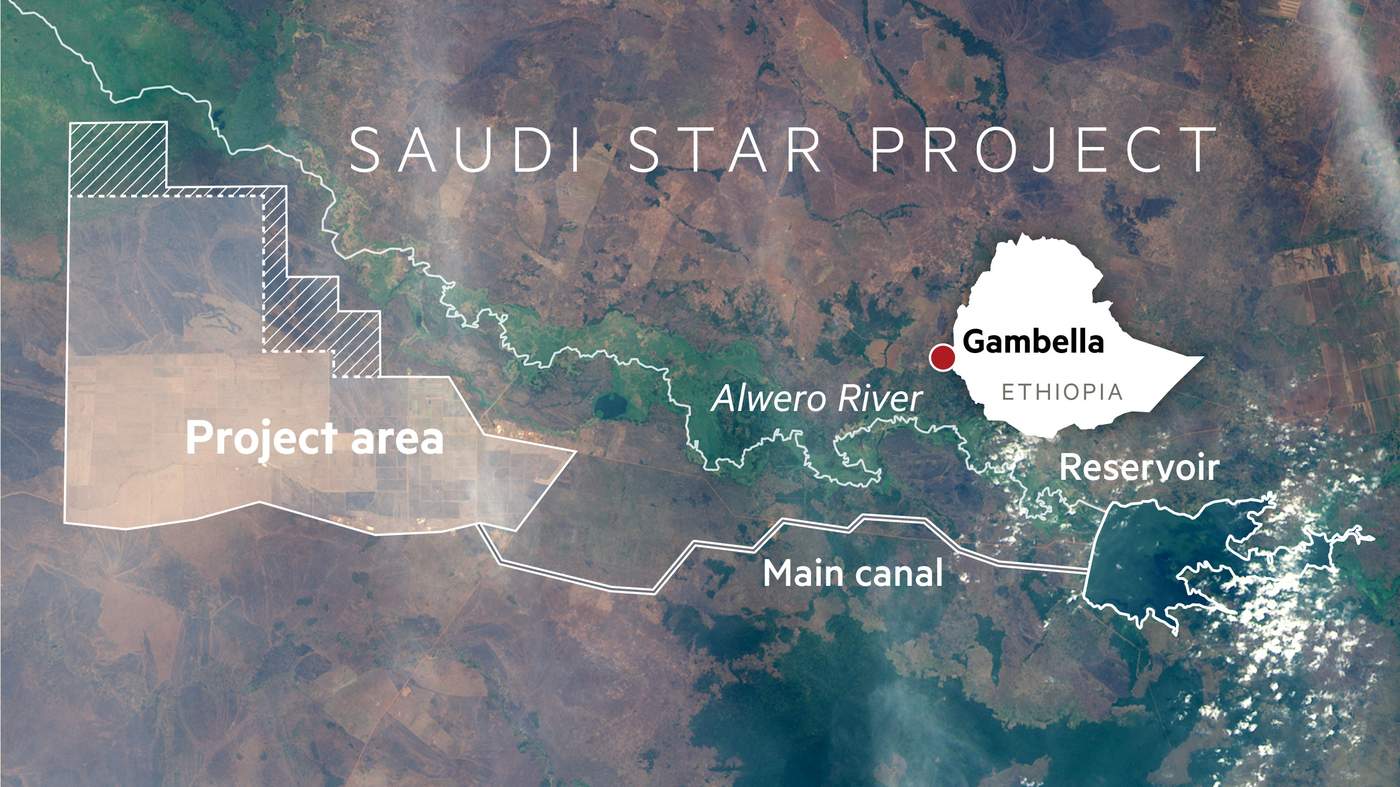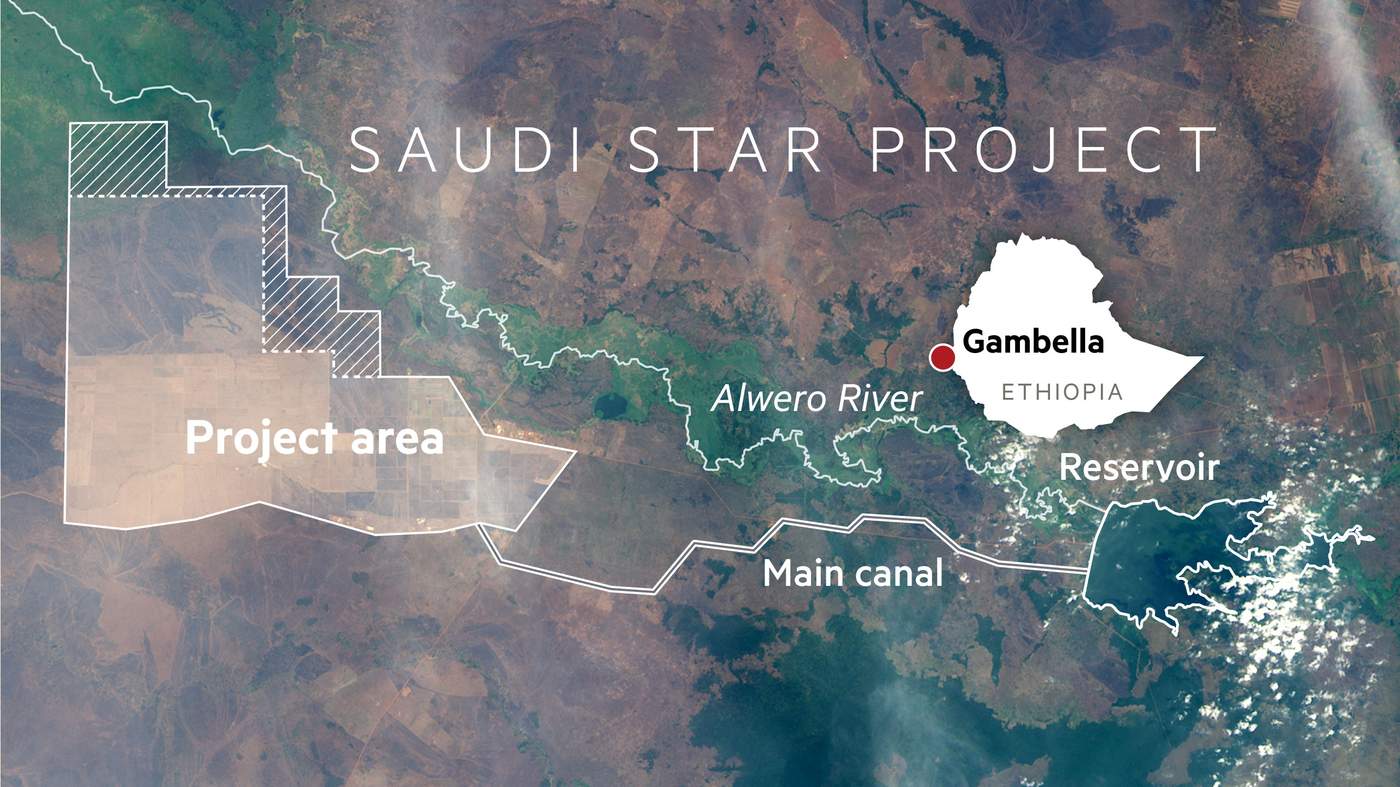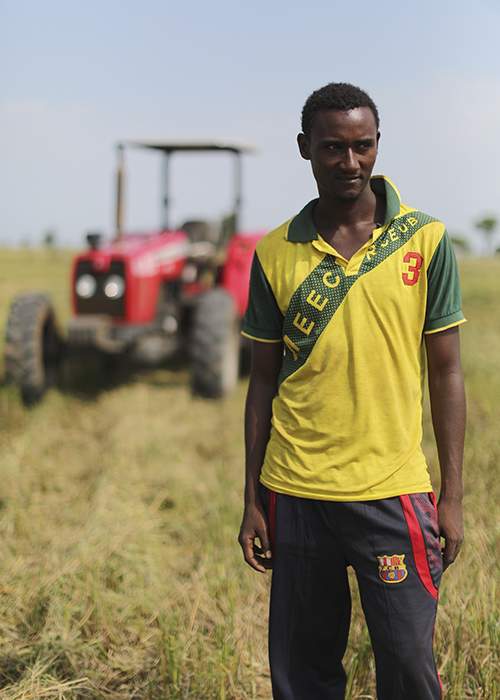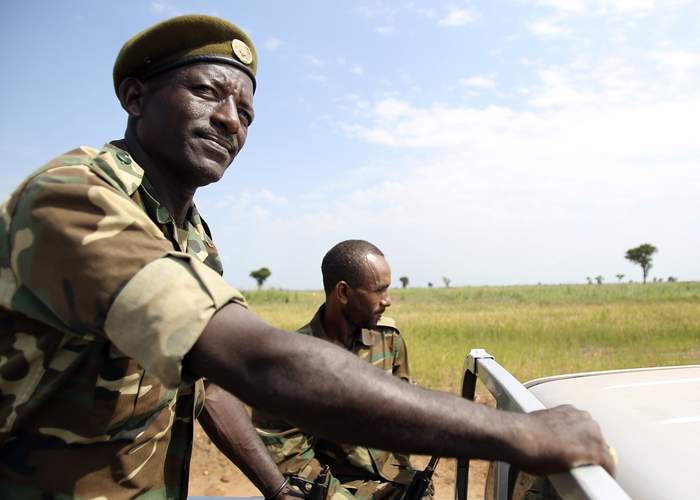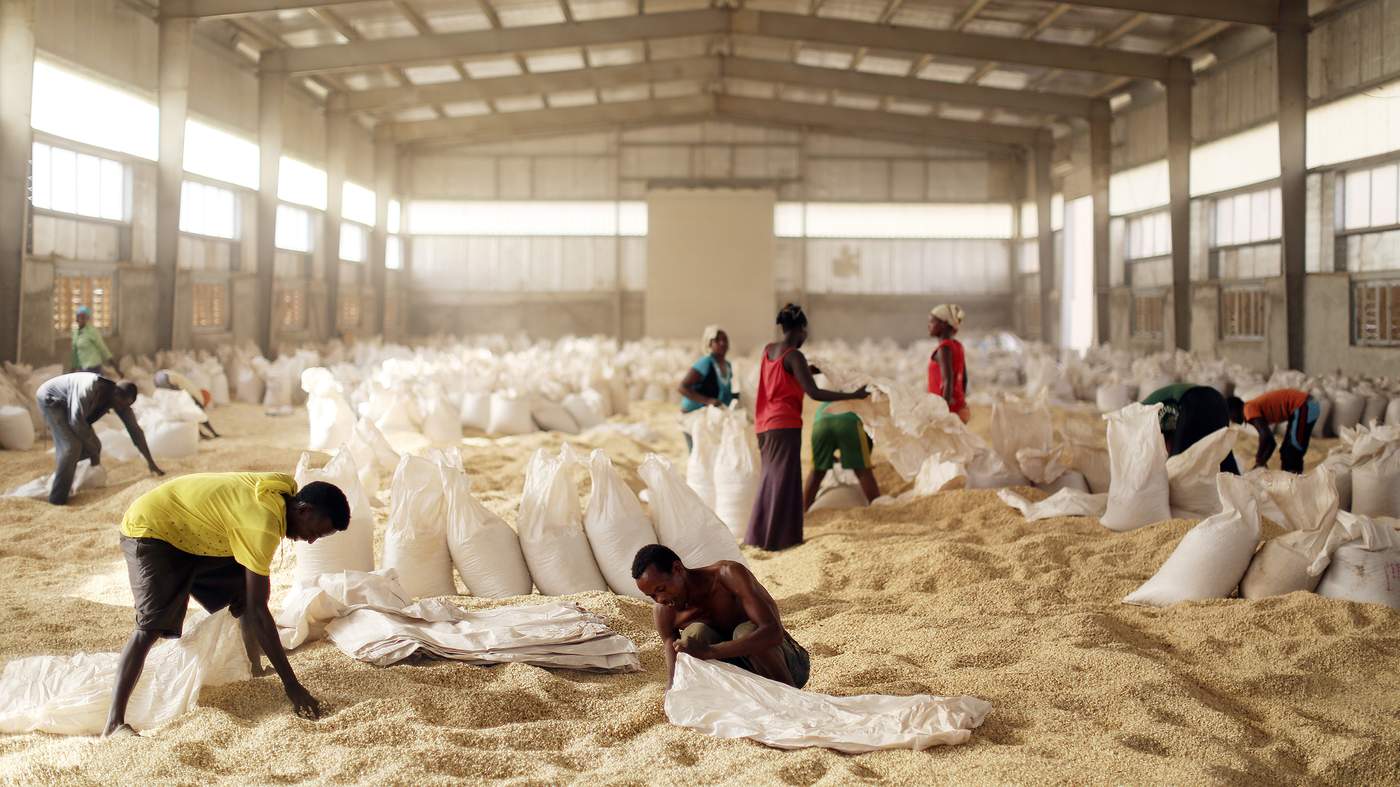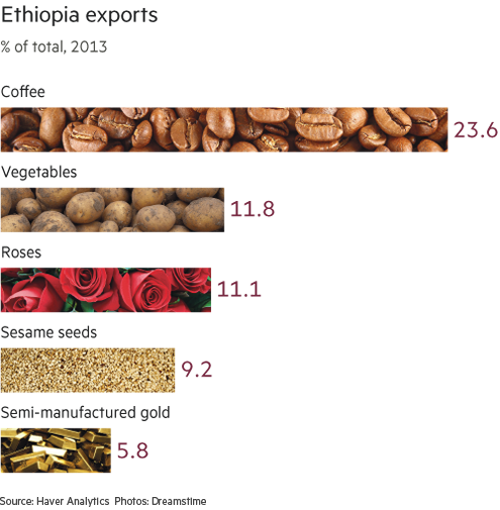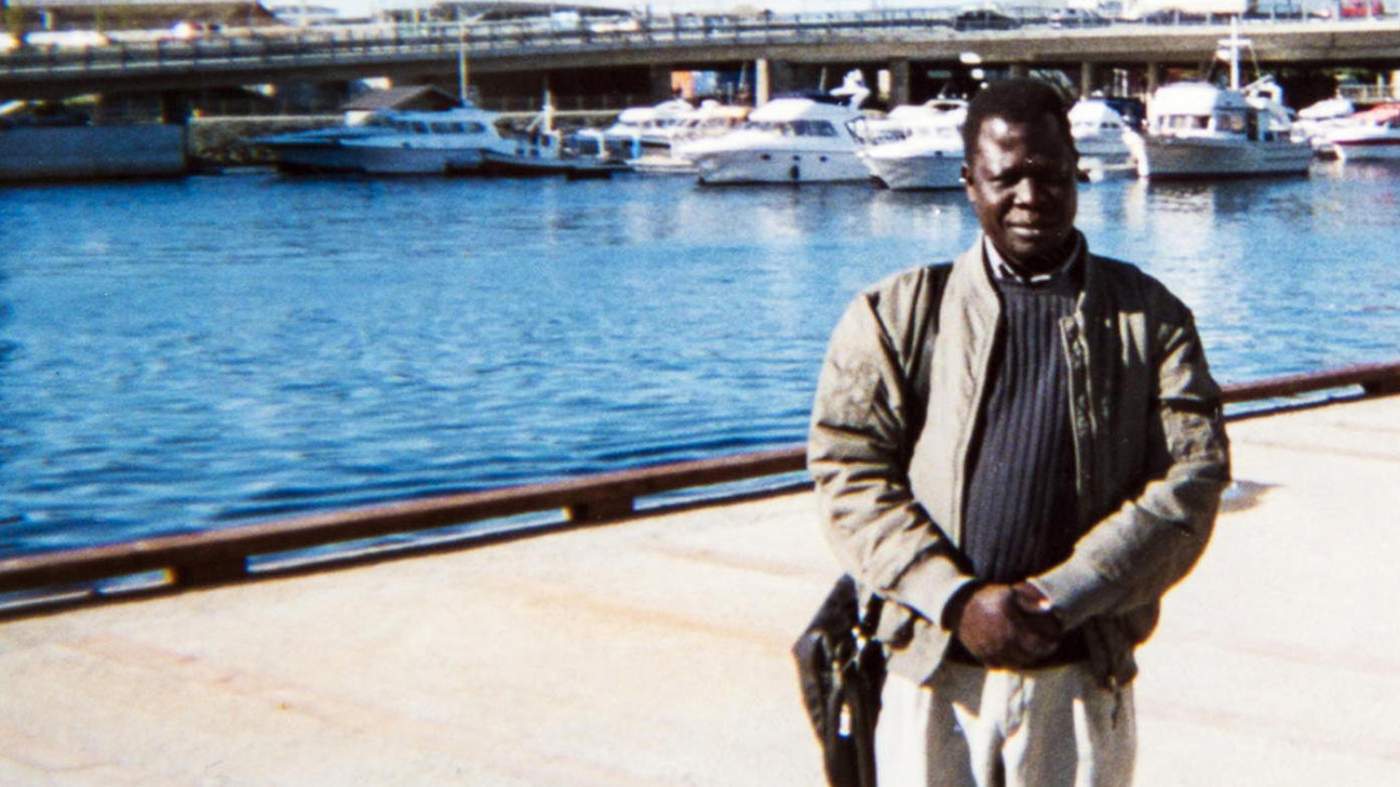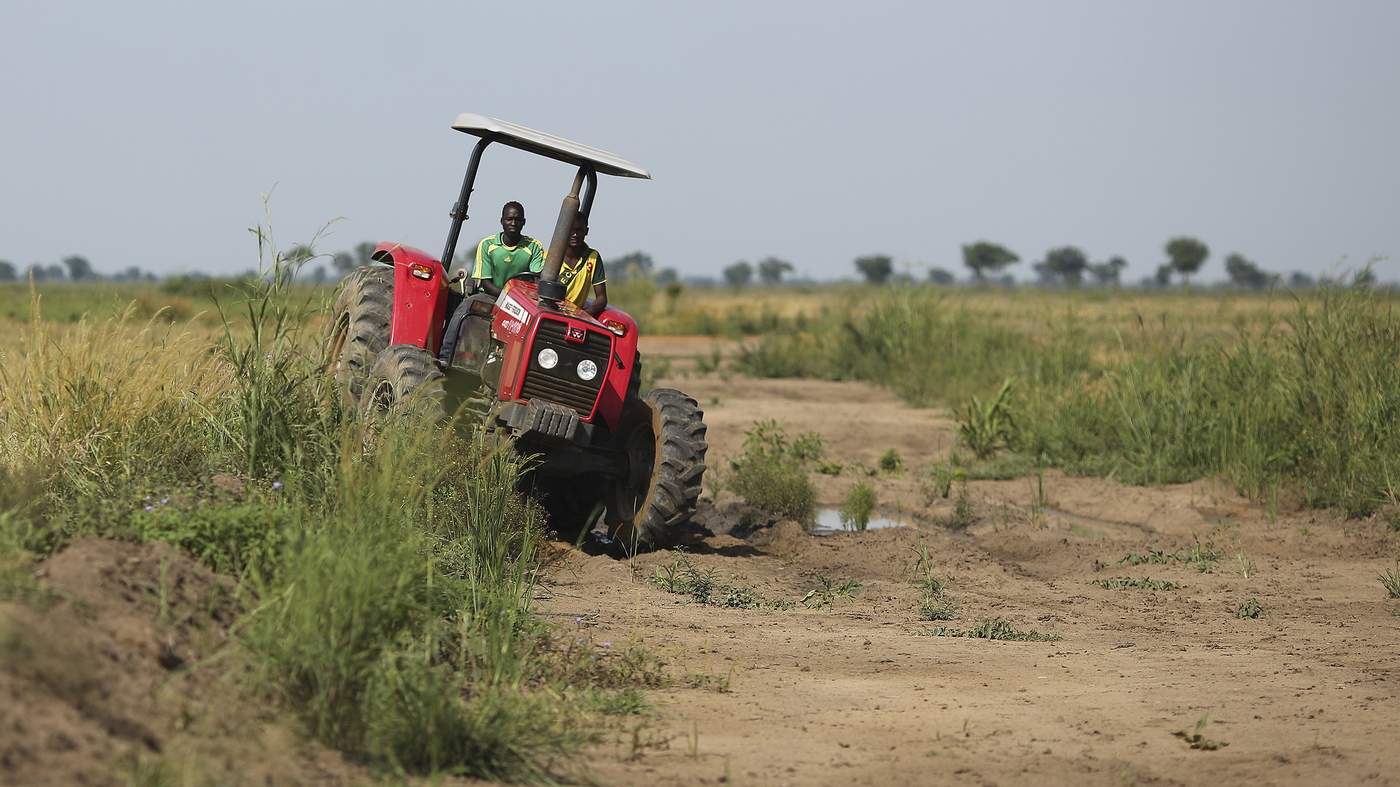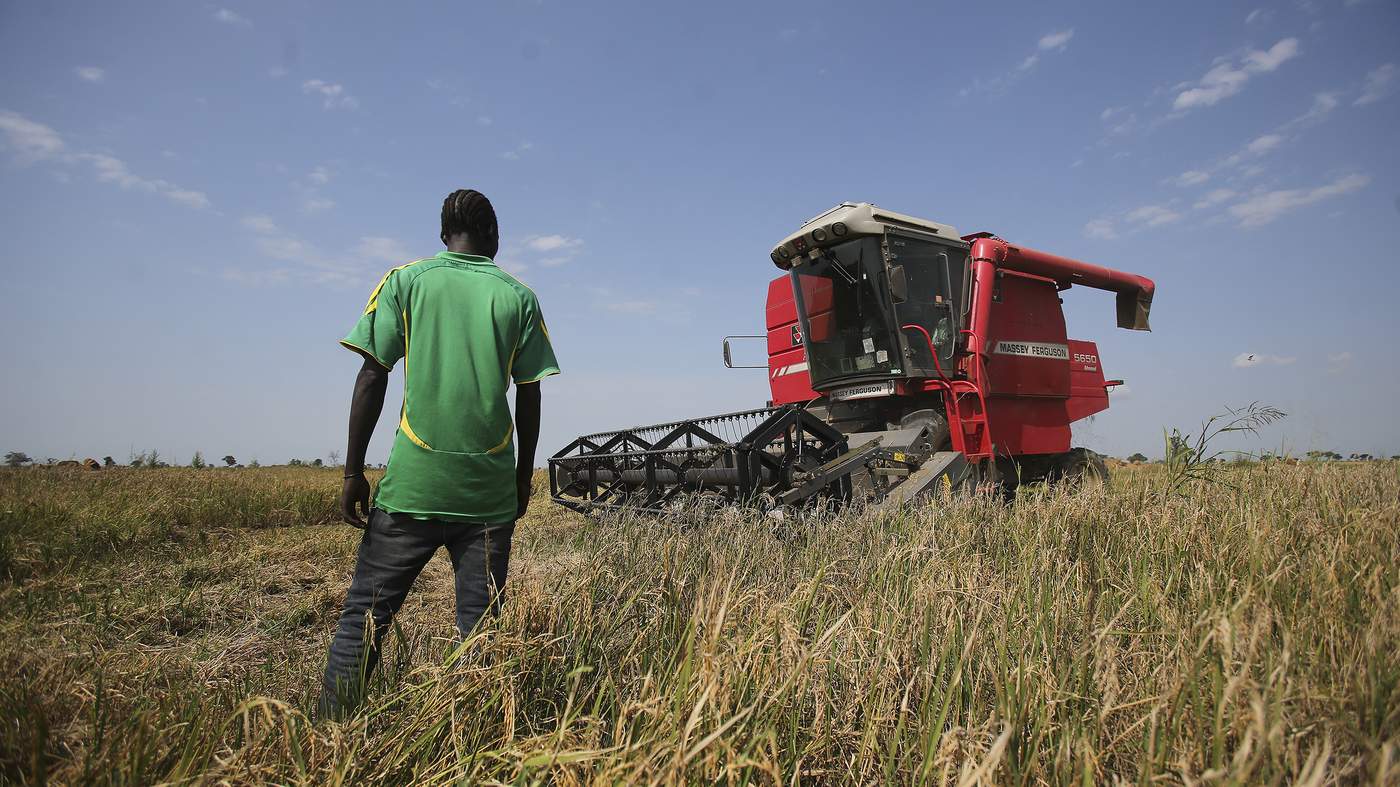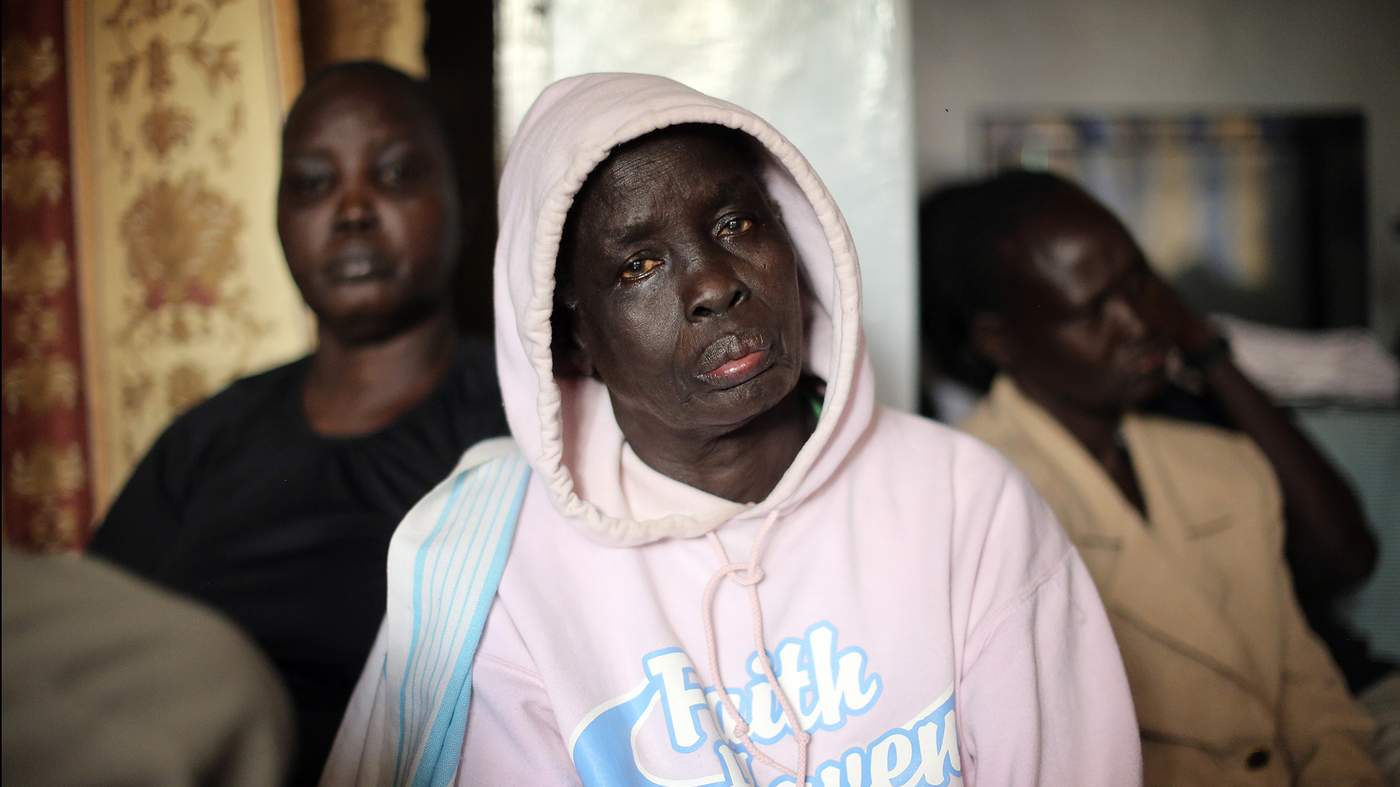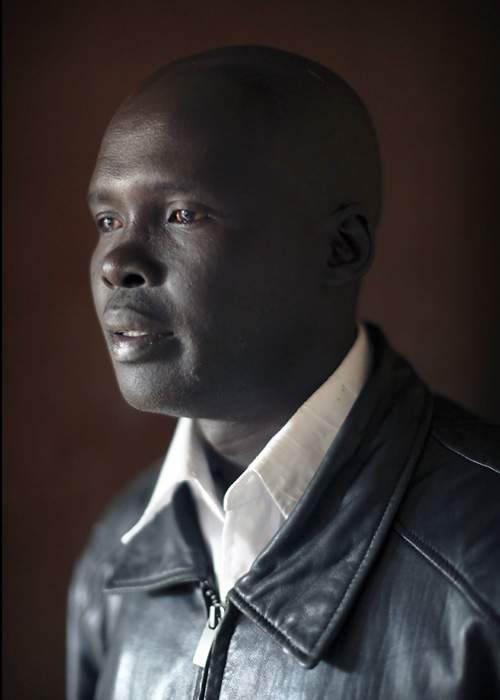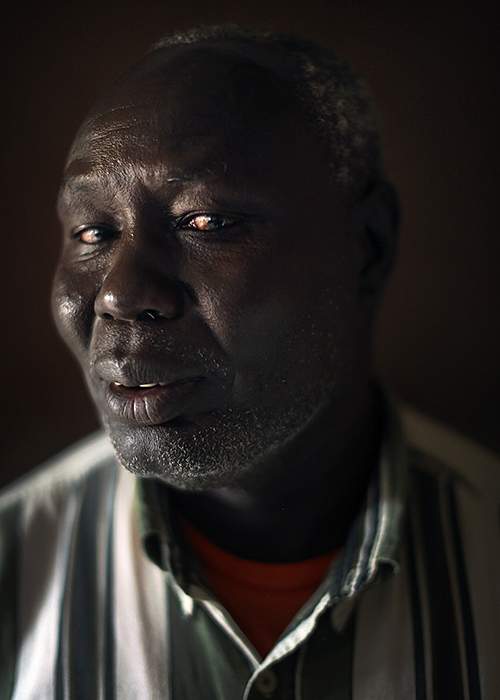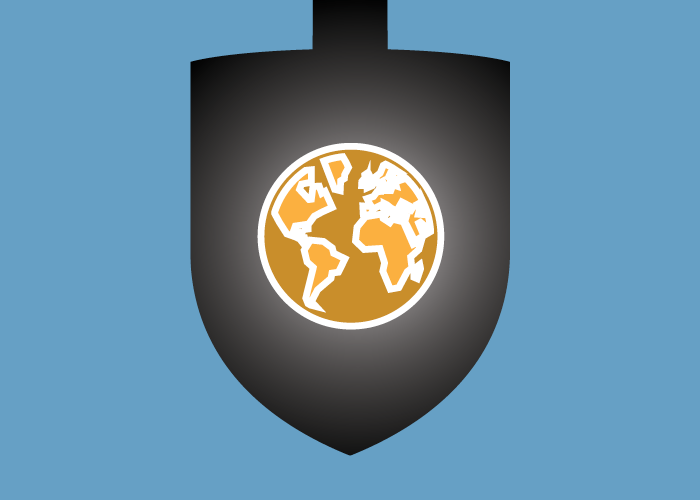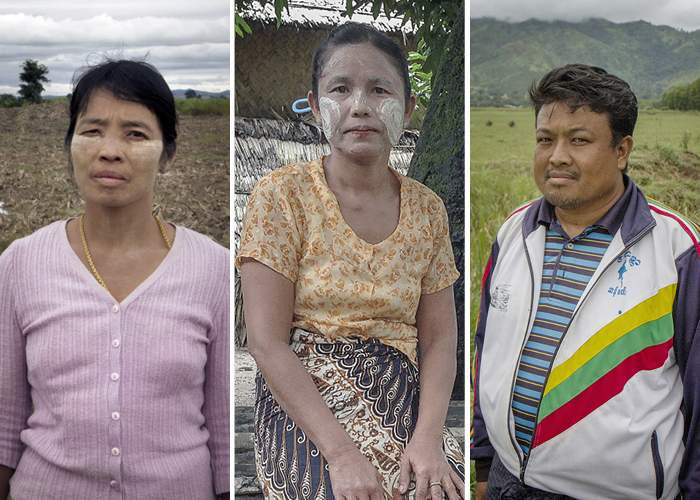Mr Bedlu, pictured, is 40, stocky and thoughtful. He wore hobnail boots and a scruffy goatee. He took over as Saudi Star’s farm operations manager in 2014. He made light of the hardship, but swapping the pleasant warmth of his home in the highland capital city of Addis Ababa for the fly-blown humidity of the lowlands had been tough. His family had yet to join him.
Saudi Star’s proprietor, a Saudi-Ethiopian tycoon named Mohammed al-Amoudi, has spent more than $200m turning a swath of bush into a farm the size of 20,000 soccer pitches. That puts the sheikh, as he is known, in the vanguard of the global land rush.
As the populations of better-off nations move to cities in ever greater numbers, the gap between the amount they grow and the amount they eat widens. Agricultural trade has long filled this gap. But a price shock in 2007, when staple crop prices doubled in a few months, demonstrated that global markets for food can break down. Then the financial crisis created demand for investments that were not linked to volatile equities and bonds. Governments, multinational companies and institutional funds started to pour millions, then billions, into other countries’ land.
From Southeast Asia to Latin America and sub-Saharan Africa, investors are seeking to profit not simply by trading the fruits of the earth — the rice and the coffee, the oil and the gold — but by controlling the land itself.
Few countries have attracted such attention from land-hunters as Ethiopia. A nation plagued by famine now envisages vast commercial farms pumping food around the region. But for millennia, land has been the source both of great advances and of bloodshed. Saudi Star’s patch of earth is no different.
Back in the cabin that houses his office after sundown, Mr Bedlu cradled a few grains of the farm’s rice in his palm. Saudi Star’s agronomists have bred Indian and Pakistani seeds into 62 varieties, testing each for their fecundity, resilience and flavour. Mr Bedlu spoke with relish of his three favourites. Two of them, Midroc 1 and Midroc 7, were named after Mr al-Amoudi’s conglomerate, the latest additions to a business empire that extends from Swedish oil refineries to Saudi defence contracts and has made him what Forbes estimates to be an $8.5bn fortune. The third, Gambella 1, took its name from the poor region in whose soils the sheikh has planted his grains.
Some of the variations are bred for the domestic market. Others are blended to suit the tastes of the wealthy rice eaters across the Red Sea. The price crisis exposed the vulnerability of countries that import what they eat, none more so than Saudi Arabia. It is said that Saudi Star was born after Mr al-Amoudi presented a sack of Ethiopian rice to King Abdullah. The monarch, delighted by its quality, gave his blessing to the sheikh’s plan for a vast farm across the sea.


In 2009, Saudi Star took a lease on 10,000 hectares in Gambella for 50 years. Later it added 4,000 more hectares when it bought an adjacent state farm. But the project struggled at first. The site is remote, the roads mostly unpaved and the locals are sceptical, even hostile.
Saudi Star’s was one of the most high-profile projects of an investment drive in which Ethiopia’s government leased 2.5m hectares, an area slightly smaller than Belgium. More than the same again is on offer. The government’s goal was to bring in modern farming technology to generate exports that would help a serious balance-of-trade problem and, some say, cement the ruling elite’s control over the fertile lowlands.
From the air, most of Ethiopia looks like a vast patchwork of tiny plots, each a slightly different shade of ochre or green.
This is a nation of smallholders: 85 per cent of employment is in agriculture and 95 per cent of all agricultural produce comes from small farms, typically the size of a couple of football pitches.
Of that, 80 per cent is consumed by the households that produce it; only 20 per cent is sold. These farmers rely on their hands, some rudimentary tools and the fickle rains.
A mere 5 per cent of agricultural output comes from big commercial farms. Yet they form an important plank in the government’s strategy to complete a journey from famine to prosperity by the middle of the century
Jemal Ahmed quivered with anger. “Some of the figures are mind-blowing,” the chief executive of Saudi Star said one morning in November. Sitting in his office on the 15th floor of the Midroc skyscraper in Addis Ababa, he rattled off some of the wilder claims of profiteering that critics of the Gambella rice farm have cited. “It makes my blood boil.”
Mr Ahmed was a leading Ethiopian cooking-oil trader when he formed an agro-business partnership with Mr al-Amoudi in 2008. In 2014, the sheikh asked him to turn round the troubled Saudi Star project.
“I’m an African,” Mr Ahmed began. “And whenever I read my history, when I see how our forefathers suffered . . .” He broke off to tell the story of his grandfather. The 23-year-old man who looked out proudly from a black and white picture on Mr Ahmed’s phone was killed days after it was taken, fighting off Benito Mussolini’s Italian colonisers.
“After colonisation and slavery, Africans are still not able to use their resources,” Mr Ahmed went on. “Take Gambella. That land is infested with mosquitoes. The indigenous survive by eating roots from the forest. They don’t have food shortages but their mortality rate is so high. They don’t go to school. The only thing you see when you fly is not factories or businesspeople: you see NGOs.”
He was resentful that, when a company such as Saudi Star tried to invest, it would come under attack from foreign activists. “I get happy when I see an Anuak boy operating a Caterpillar machine the way an American boy would do on the Mississippi delta.”
Saudi Star has tangled for years with activists from the Oakland Institute and Human Rights Watch, who have compiled detailed reports on Ethiopia’s land investment programme and the heavy-handed ways in which, they allege, the government shifts locals out of the way. Mr Ahmed flatly denied such claims. “No one was living in this area,” he said of Saudi Star's plot.
On the wall of Mr Ahmed’s office hung a framed picture of him and Mr al-Amoudi, whose closeness to the ruling party has exacerbated resentment among Gambellans. Mr Ahmed objected to attempts to portray the sheikh as “a man who came to take advantage of Ethiopia’s resources at the expense of the indigenous people, to take their ancestral land”.
Instead, he argued, the farm made economic sense. “Saudi Arabia is a rich country and imports food. We have rich lands but we need capital. If Saudi hunger for food lets us bring in capital, that is a blessing for Ethiopia.”
In Abobo, the last village before the checkpoint that marks the start of Saudi Star’s farm, the school and most of the houses are made of mud. Four-wheel-drives bump along the road, carrying farm staff or aid workers ministering to refugees from the war across the border in South Sudan.
When one passed recently, half a dozen children raced alongside, waving giddily at the windows. They wore Ethiopia soccer kits. Both the national flag and that of Gambella fluttered outside the ramshackle town hall.
A faultline of history — or, perhaps, of modernity — has opened up in Gambella. The forces of global markets have smashed up against the instinct to preserve a homeland. Some of the youngsters in Ethiopia kits might find themselves spurred to resist the government, like Mr Okello and the Nairobi refugees. Others might embrace a job at Saudi Star, maybe rising to run the farm. But it is hard to see how any will do both. If a global land rush is at hand, Gambella’s rift will not be the last.
Across continents, big investors are pouring in billions into one of the world’s most precious resources – land. They promise progress. But their arrival can upend livelihoods and spark life-and-death struggles. Read more
Two pipelines stretch from the Bay of Bengal to China. They have opened up a trail of conflict over land, as a nation struggles to open up to the world.
Norway’s government has offered Indonesia a billion dollars to save its rainforests. Now its ministers are heading to the Borneo jungle to see if there is any chance of success.
For related educational material go to the Pulitzer Center on Crisis Reporting

